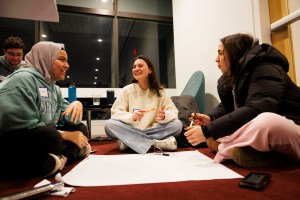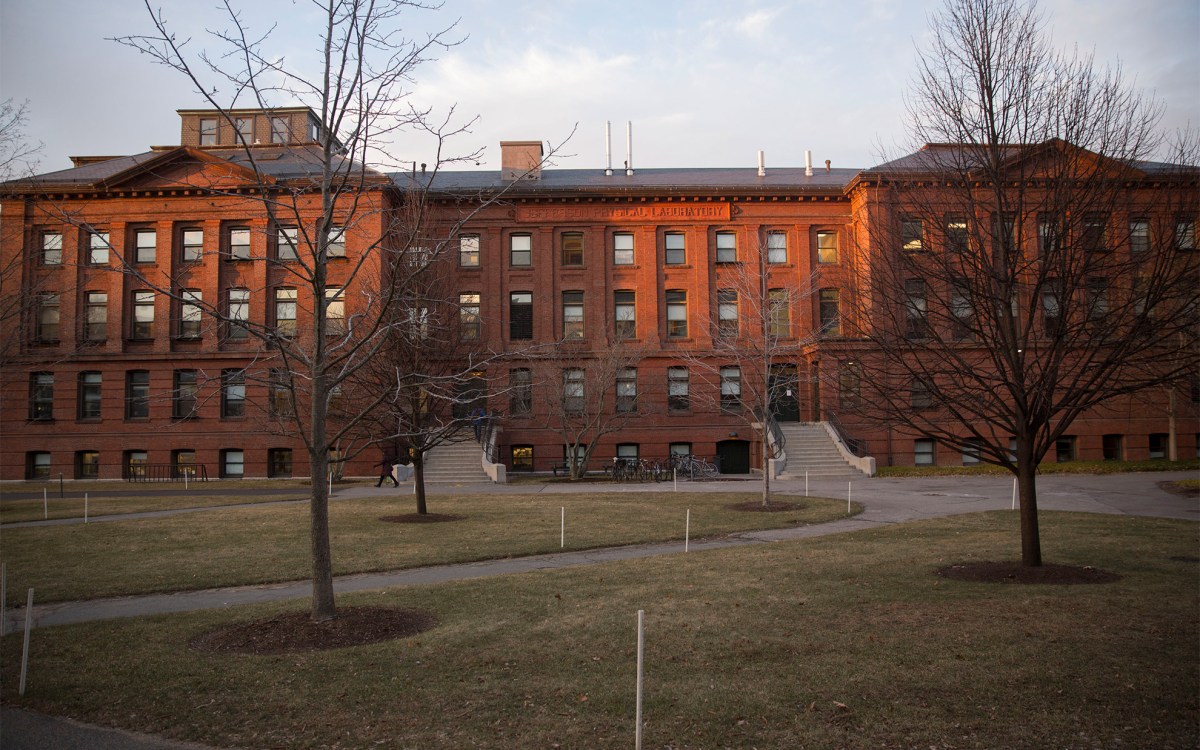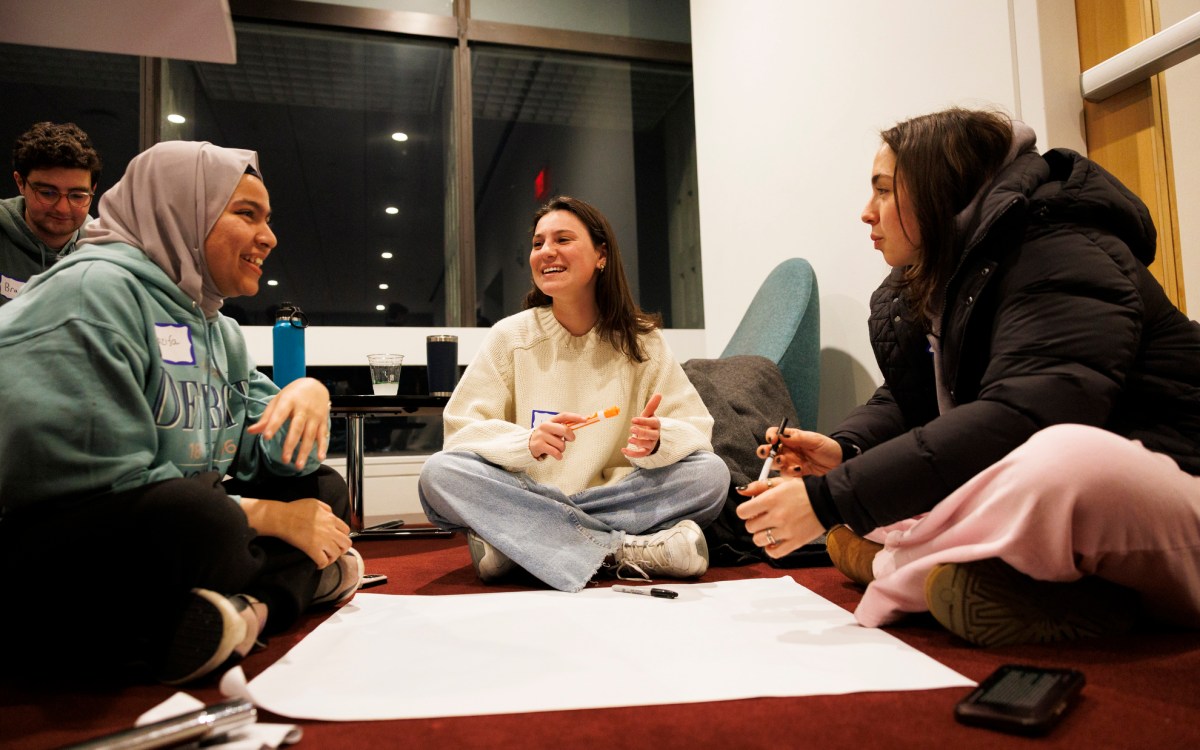Benefits beyond dollars:
20/20/2000 program generates 1,700 housing units and stimulates lending
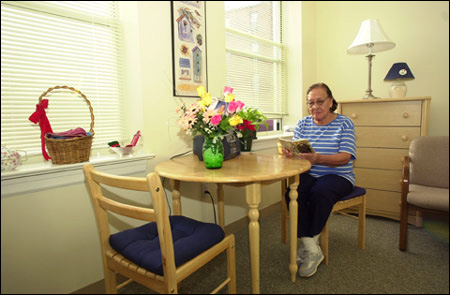
Harvard’s 20/20/2000 program has helped generate about 1,700 units of affordable housing in its first three years, aiding in the creation of everything from homeless shelters to low-income rental housing to home ownership programs for middle-income residents.
The dollars are helping fill a critical need in Harvard’s host communities of Cambridge and Boston, where rents and home prices continue to rise even as the regional economy slows.
DeWitt Jones, president of Boston Community Capital, one of Harvard’s largest partners in the 20/20/2000 program, said that every dollar they get from a source like Harvard allows them to take on new projects and offer better terms to borrowers who can’t get more traditional financing.
“Housing has gotten so expensive that normal market forces can’t provide housing for [the low end of the market],” Jones said. “It’s a huge housing crisis.”
Announced in November 1999, 20/20/2000 is a $20 million low-interest loan fund. The fund provides 20-year loans to area nonprofit agencies, to be repaid at 2 percent interest. It is managed by three Cambridge and Boston nonprofit agencies: Boston Community Capital, the Cambridge Affordable Housing Trust, and the Local Initiatives Support Corporation.
Roughly $11.7 million in 20/20/2000 funds have been lent so far. Those dollars have been part of $39.3 million lent by community partners and nonprofits for housing projects whose total development cost is $285.8 million.
The program earmarks $10 million each for programs in Boston and in Cambridge over its 20-year lifetime and is just one of many Harvard University programs aimed at helping ease the housing shortage in its host communities.
Other initiatives include the Housing Emergency Loan Fund, established in 1985 to help nonprofit organizations renovate affordable housing units, and Harvard’s recent sale of 100 units to the City of Cambridge at a fraction of their market value to be maintained as affordable housing. In the 1970s, Harvard built the Riverway at Mission Park, 775 units of Section 8 housing, whose ownership was transferred to the tenants’ association in 1999.
In addition, Harvard is working to ease demand by housing more students on campus. Its One Western Avenue project in Allston will provide housing for 350 graduate students, relieving pressure on the local housing market.
The 20/20/2000 program, along with other housing activities, stems from Harvard’s recognition that its fortunes are tied to the health of its host communities, according to Harvard’s Vice President of Government, Community and Public Affairs Alan J. Stone. Stone said the partnership with nonprofit housing organizations has been an important reason the program has been able to help create 1,700 units in its first years.
“The University is happy that its efforts, together with those of others working hard on this issue, have helped create these units in just a few years,” Stone said. “By assisting working families, we deepen and strengthen the core of our communities, helping to retain the vital and diverse neighborhoods that we cherish.”
Indirect stimulus
Harvard’s commitment has had indirect effects as well. Besides building housing, it’s attracted other investors to Harvard’s nonprofit partners, generating even more money for housing creation.
Boston Community Capital’s Jones said that by demonstrating confidence in Boston Community Capital, Harvard has shown other potential lenders that Boston Community Capital can be trusted to manage their money properly. The funds managed by Boston Community Capital have increased threefold over the last three years, from $20 million to $60 million, creating a stimulus well beyond the $3.4 million Harvard has loaned the organization directly.
“The dollars Harvard lent us related to community development were very important, but the way they did it leveraged so much more that we can make much larger loans to many more projects,” Jones said. “It’s an indirect, but very clear benefit.”
Housing the homeless elderly
Though 20/20/2000 aims to create affordable housing, the funds are not intended to pay for projects outright. The dollars are targeted to provide critical funds where needed to help a project go forward. Those funds are then repaid and re-loaned, working over and over again to boost the region’s affordable housing supply.
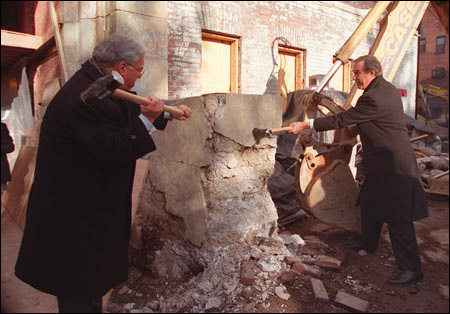
In Boston’s Roxbury neighborhood, 20/20/2000 funds going to a Ruggles Street project provided “gap” funding to renovate an old school into an assisted living facility for low-income elderly. The financing paid for expenses not covered by about 12 other funding sources, according to Elisabeth Babcock, president and chief executive officer of the Committee to End Elder Homelessness, which manages and co-owns the property.
Babcock said the project, which opened in 2001, is unique in the United States in that it provides services to formerly homeless elderly. Without the facility, many of its residents would be homeless, living crammed in apartments with relatives, or in inappropriate housing situations, such as an apartment without an elevator.
“Every one of the residents has a combination of physical frailty, low income, and [advanced age],” Babcock said. “The alternatives for these elders is living in shelters or on the streets or in adverse housing conditions until they deteriorate physically enough to go into the hospital or a nursing home.”
By providing the support services the elders need, the project saves an estimated $500,000 annually in Medicaid costs for either emergency hospital services or nursing home care, Babcock said.
“The fact that we’ve opened, with Harvard’s help, a building that provides this kind of support – three meals a day, help dressing and bathing, is groundbreaking,” Babcock said. “Harvard has created a new humanitarian intervention that is giving people a place to live in the communIn Roxbury, 20/20/2000 funds provided ‘gap’ funding to create an assisted living facility for low-income elderly. Francisca Anabisca (left) sits in her apartment at 25 Ruggles St. (Staff photo by Jon Chase)ity with services that weren’t available before.”


